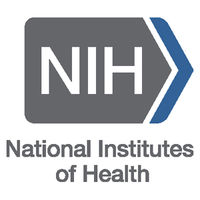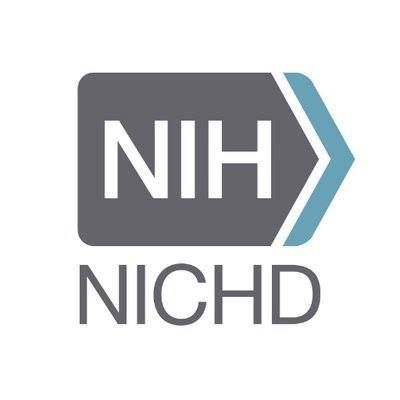预约演示
更新于:2025-05-07
Kallmann Syndrome
卡尔曼综合征
更新于:2025-05-07
基本信息
别名 ANOSMIC HYPOGONADISM、Anosmia eunuchoidism、Anosmic Hypogonadism + [90] |
简介 A genetically heterogeneous disorder caused by hypothalamic GNRH deficiency and OLFACTORY NERVE defects. It is characterized by congenital HYPOGONADOTROPIC HYPOGONADISM and ANOSMIA, possibly with additional midline defects. It can be transmitted as an X-linked (GENETIC DISEASES, X-LINKED), an autosomal dominant, or an autosomal recessive trait. |
关联
2
项与 卡尔曼综合征 相关的药物靶点 |
作用机制 KISS1调节剂 |
在研适应症 |
最高研发阶段临床2期 |
首次获批国家/地区- |
首次获批日期1800-01-20 |
靶点 |
作用机制 GnRHR激动剂 |
在研适应症 |
最高研发阶段临床阶段不明 |
首次获批国家/地区- |
首次获批日期1800-01-20 |
23
项与 卡尔曼综合征 相关的临床试验NCT06019182
Investigations of Individuals With MEHMO Syndrome or eIF2-Pathway Related Conditions
This observational natural history study will follow individuals with MEHMO (Mental disability, Epileptic seizure, Hypopituitarism/Hypogenitalism, Microcephaly, Obesity) syndrome or an eIF2-pathway related disorder, who have symptoms such as intellectual delay, seizures, abnormal hormone and blood sugar levels, and decreased motor skills.
No current treatment for these conditions is available. A major impediment to the testing of potential therapeutic interventions is the lack of well-defined outcome measures. This protocol seeks to identify biochemical and clinical markers to monitor disease progression, and better understand the natural history of these conditions.
Any person diagnosed with MEHMO syndrome or related conditions, who can travel to the NIH Clinical Center can participate in this study.
The study involves:
* General health assessment and evaluation
* Imaging studies
* Laboratory tests
* Collection of blood, urine, spinal fluid, skin biopsy.
No current treatment for these conditions is available. A major impediment to the testing of potential therapeutic interventions is the lack of well-defined outcome measures. This protocol seeks to identify biochemical and clinical markers to monitor disease progression, and better understand the natural history of these conditions.
Any person diagnosed with MEHMO syndrome or related conditions, who can travel to the NIH Clinical Center can participate in this study.
The study involves:
* General health assessment and evaluation
* Imaging studies
* Laboratory tests
* Collection of blood, urine, spinal fluid, skin biopsy.
开始日期2023-10-23 |
ChiCTR2200055213
Early diagnosis and treatment of male children with Kallmann syndrome
开始日期2022-01-03 |
申办/合作机构 |
NCT05971836
The Molecular Basis of Inherited Reproductive Disorders
The goal of this study is to learn more about the genes that control puberty and reproduction in humans.
开始日期2021-01-21 |
申办/合作机构- |
100 项与 卡尔曼综合征 相关的临床结果
登录后查看更多信息
100 项与 卡尔曼综合征 相关的转化医学
登录后查看更多信息
0 项与 卡尔曼综合征 相关的专利(医药)
登录后查看更多信息
1,531
项与 卡尔曼综合征 相关的文献(医药)2025-06-01·Global Medical Genetics
PROKR2 mutations and SPRY4 variants with uncertain significance in a Kallmann syndrome family: Incomplete penetrance
Article
作者: Hu, Xiang ; Li, Huiqing ; Zeng, Tianshu ; Chen, Lulu ; Yuan, Yuanfan ; Zhang, Qiao ; Zhang, Jiehan ; Zhou, Zehua ; Huang, Qianqian ; Wan, Qing
2025-05-01·Current Pharmaceutical Design
Crosstalk: Biochemical Signatures and Clinical Implications in Rare
Hereditary Hemolytic Anemias (Hereditary Spherocytosis)
Article
作者: Baig, Mirza Rafi ; Asseri, Amer Hamzah Obaied ; Almalki, Naif Abdullah R. ; Anwar, Firoz ; Al Toub, Faris Abdullah
2025-04-18·Medicine
Two cases of Kallmann syndrome caused by a novel mutation in ANOS1: A case report.
Article
作者: Tu, Sheng-Ke ; Shi, Min ; Song, Kui ; Li, Min ; Xiong, Jin-Ke
55
项与 卡尔曼综合征 相关的新闻(医药)2024-05-21
Current methods to model or correct mutations in live cells are inefficient, especially when multiplexing -- installing multiple point mutations simultaneously across the genome. Researchers have developed new, efficient genome editing tools called multiplexed orthogonal base editors (MOBEs) to install multiple point mutations at once.
The human genome consists of around 3 billion base pairs and humans are all 99.6% identical in their genetic makeup. That small 0.4% accounts for any difference between one person and another. Specific combinations of mutations in those base pairs hold important clues about the causes of complex health issues, including heart disease and neurodegenerative diseases like schizophrenia.
Current methods to model or correct mutations in live cells are inefficient, especially when multiplexing -- installing multiple point mutations simultaneously across the genome. Researchers from the University of California San Diego have developed new, efficient genome editing tools called multiplexed orthogonal base editors (MOBEs) to install multiple point mutations at once. Their work, led by Assistant Professor of Chemistry and Biochemistry Alexis Komor's lab, appears in Nature Biotechnology.
Komor's team was especially interested in comparing genomes that differ at a single letter change in the DNA. Those letters -- C (cytosine), T (thymine), G (guanine), A (adenosine) -- are known as bases. Where one person has a C base, another person might have a T base. These are single nucleotide variants (SNVs) or single point mutations, a person might have 4-5 million variants. Some variants are harmless; some are harmful; and often it is a combination of variants that confers disease.
One issue with using the genome in disease modeling is the sheer number of possible variations. If scientists were trying to determine which genetic mutations were responsible for heart disease, they could decode the genomes of a cohort that all had heart disease but the number of variations between any two people makes it very hard to determine which combination of variations causes the disease.
"There is a problem interpreting genetic variants. In fact, most variants that are identified are unclassified clinically, so we don't even know if they're pathogenic or benign," stated Quinn T. Cowan, a recent Ph.D. graduate from the university's Department of Chemistry and Biochemistry and first author on the paper. "Our goal was to make a tool that can be used in disease modeling by installing multiple variants in a controlled laboratory setting where they can be studied further."
An evolution in gene-editing
To understand why MOBEs were created, we have to understand the limitations of the traditional gene-editing tool CRISPR-Cas9. CRISPR-Cas9 uses a guide RNA, which acts like a GPS signal that goes straight to the genomic location you want to edit. Cas9 is the DNA-binding enzyme that cuts both strands of the DNA, making a complete break.
Although relatively straightforward, double-stranded breaks can be toxic to cells. This kind of gene-editing can also lead to indels -- random insertions and deletions -- where the cell is not able to perfectly repair itself. Editing multiple genes in CRISPR-Cas9 multiples the risks.
Instead of CRISPR, Komor's lab uses a base-editing technique she developed, which makes a chemical change to the DNA, although only one type of edit (C to T or A to G, for example) can be made at a time. So rather than scissors that cut out an entire section at once, base-editing erases and replaces one letter at a time. It is slower, but more efficient and less harmful to cells.
Simultaneously applying two or more base editors (changing a C to T at one location, and an A to G at another location in the genome), allows for better modeling of polygenic diseases -- those occurring due to more than one genetic variant. However, a technology didn't exist that could do this efficiently without guide RNA "crosstalk," which happens when base editors make unwanted changes.
Cowan's MOBEs use RNA structures called aptamers -- small RNA loops that bind to specific proteins -- to recruit base-modifying enzymes to specific genomic locations enabling simultaneous editing of multiple sites with high efficiency and a lower incidence of crosstalk.
This system is novel and is the first time someone used aptamers to recruit ABEs (adenosine base editors) in combination with CBEs (cytosine base editors) in an orthogonal pattern to make the MOBEs.
The differences are stark: when CBE and ABE are given together not using MOBE, crosstalk occurs up to 30% of the time. With MOBE, crosstalk is less than 5%, while achieving 30% conversion efficiency of the desired base changes.
The study was a proof of principle to test the feasibility of the MOBE system, which has been granted a provisional patent. To test them even further, the team conducted several case studies with real diseases, including Kallmann syndrome, a rare hormonal disorder. Their experiments revealed that MOBE systems could be used to efficiently edit relevant cell lines of certain polygenic diseases.
"We're in the process of putting the plasmids up on AddGene so anyone can freely access them. Our hope is that other researchers will use the MOBEs to model genetic diseases, learn how they manifest and then hopefully create effective therapies," stated Cowan.
This research was funded in part by the National Institutes of Health (1R35GM138317, T32 GM008326, and T32 GM112584) and the Research Corporation for Science Advancement (28385).
Full list of authors: Quinn T. Cowan, Sifeng Gu, Wanjun Gu, Brodie L. Ranzau, Tatum S. Simonson, and Alexis C. Komor (all UC San Diego).
基因疗法siRNA
2024-03-11
▲ 详细日程见文末 ▲自20世纪初以来,中国兽用生物制品行业经历了从无到有、从粗放到规范的发展历程。这一行业的起源可以追溯到1918年创建的青岛商品检验局血清所和1919年建立的北平中央防疫处,这两个机构的成立标志着中国兽用生物制品的初步形成。在兽用生物制品的早期阶段,由于缺乏统一的标准和规范,行业处于粗放式的发展状态。而随着科技进步和兽医学的不断发展,我国开始重视兽用生物制品的质量控制和标准化。1952年,国内颁布了第一部《兽医生物药品制造及检验规程》,标志着中国兽用生物制品行业开始进入规范化、标准化的发展阶段。兽用生物制品产品主要包括三类,即疫苗产品、诊断制剂和治疗制剂,其中接近九成的收入来自兽用疫苗。目前,兽用疫苗行业已发展成为一个覆盖多种动物疫病类型的高增长行业。在2023年里,兽用疫苗领域又有哪些新产品进展呢?下面主要汇总了2023年至今,国内兽用疫苗的申报注册获批等情况。2024年二月2月4日,中华人民共和国农业农村部发布第759号公告,批准诗华美国动物保健公司生产的鸡传染性喉气管炎重组鸡痘病毒二联活疫苗,匈牙利诗华—费拉西亚兽医生物制品有限公司生产的鸡传染性法氏囊病活疫苗(W2512 G-61株)在我国再注册,核发《进口兽药注册证书》。2月4日,中华人民共和国农业农村部发布第757号公告,华南农业大学、广州市华南农大生物药品有限公司研制的重组禽流感病毒(H5+H7)三价灭活疫苗(H5N2 rHN5801株+rGD59株,H7N9 rHN7903株),已通过农业农村部组织的生产毒种变更备案审查。2月4日,中华人民共和国农业农村部发布第758号公告,批准贵州福斯特生物科技有限公司、贵州福斯特生物技术研究院、东北农业大学、山西维尔富生物科技有限公司、哈尔滨维科生物技术有限公司、广东省农业科学院动物卫生研究所、哈尔滨威科赛斯生物科技有限公司申报的鸡新城疫、禽流感(H9亚型)、禽腺病毒病(I群,4型)三联灭活疫苗(La Sota株+HS株+DN株)为新兽药,核发《新兽药注册证书》。一月1月3日,永顺生物近期获得农业农村部核发“鸡球虫病四价活疫苗(柔嫩艾美耳球虫ETGZ株+毒害艾美耳球虫ENHZ株+堆型艾美耳球虫EAGZ株+巨型艾美耳球虫EMPY株)”的生产批准文号(兽药生字190592329),成为全国第四家可生产“鸡球虫病四价活疫苗”的生产企业。1月3日,中华人民共和国农业农村部发布第747号公告,长春西诺生物科技有限公司、安徽爱宠生物科技有限公司、吉林正业生物制品股份有限公司研制的猫鼻气管炎、嵌杯病毒病、泛白细胞减少症三联灭活疫苗(CP2株+CC3株+VP2蛋白),已通过农业农村部组织的应急评价。1月17日,中华人民共和国农业农村部发布第753号公告,批准英特威国际有限公司生产的犬瘟热、传染性肝炎、细小病毒病、副流感四联活疫苗,犬钩端螺旋体病(犬型、黄疸出血型)二价灭活疫苗;澳大利亚生物资源公司生产的鸡毒支原体活疫苗(TS-11株)在我国再注册。批准西班牙海博莱生物大药厂生产的鸡新城疫灭活疫苗(La Sota株),英特威国际有限公司生产的鸡传染性支气管炎活疫苗(Ma5株)、鸡新城疫灭活疫苗(Clone 30株)、鸡传染性喉气管炎活疫苗(Serva株)及鸡减蛋综合征灭活疫苗(BC14株)在我国变更注册。1月18日,中华人民共和国农业农村部发布第751号公告,批准中国农业科学院哈尔滨兽医研究所、哈尔滨维科生物技术有限公司、哈尔滨国生生物科技股份有限公司、江苏南农高科技股份有限公司、华派生物技术(集团)股份有限公司申报的猪伪狂犬病活疫苗(TP株)为新兽药,核发《新兽药注册证书》。2023年十二月12月6日,中华人民共和国农业农村部发布第731号公告,普莱柯生物工程股份有限公司、洛阳惠中生物技术有限公司、洛阳惠中动物保健有限公司、河南新正好生物工程有限公司、普莱柯(南京)生物技术有限公司的猫泛白细胞减少症、杯状病毒病、鼻气管炎三联灭活疫苗(708株+60株+64株),中牧股份的猫鼻气管炎、杯状病毒病、泛白细胞减少症三联灭活疫苗(HBJ06株+CHZ05株+PSY01株)已通过农业农村部组织的应急评价,获得生产批准。12月29日,中华人民共和国农业农村部发布第743号公告,批准中国农业科学院兰州兽医研究所、肇庆大华农生物药品有限公司、山东华宏生物工程有限公司申报的鸡新城疫灭活疫苗(MG7株)为新兽药,核发《新兽药注册证书》。批准瑞普(保定)生物药业有限公司申报的鸡传染性喉气管炎耐热保护剂活疫苗,扬州优邦生物药品有限公司、江苏省家禽科学研究所、国药集团扬州威克生物工程有限公司、哈药集团生物疫苗有限公司申报的鸡新城疫、禽流感(H9亚型)二联灭活疫苗(La Sota株+JY株)产品变更注册,申请人按照农业农村部批准的标签说明书自行修改并印制、使用产品标签说明书。十一月11月17日,中华人民共和国农业农村部发布第724号公告,批准华南农业大学、广州市华南农大生物药品有限公司申报的重组禽流感病毒(H5+H7)二价灭活疫苗(H5N2亚型,rFJ56株+H7N9亚型,rGD76株)为新兽药,核发《新兽药注册证书》。十月10月23日,中华人民共和国农业农村部发布第716号公告,金宇保灵生物药品有限公司、洛阳沃普森生物工程有限公司、内蒙古自治区动物疫病预防控制中心、金河佑本生物制品有限公司研制的牛结节性皮肤病灭活疫苗(NMG株,悬浮培养),华中农业大学、武汉科前生物股份有限公司、云南生物制药有限公司、华派生物技术(集团)股份有限公司研制的猫鼻气管炎、杯状病毒病、泛白细胞减少症三联灭活疫苗(WH–2017株+LZ–2016株+CS–2016株),已通过农业农村部组织的应急评价。10月24日,中华人民共和国农业农村部发布第718号公告,批准北京中海生物科技有限公司、广东温氏大华农生物科技有限公司、青岛易邦生物工程有限公司、乾元浩生物股份有限公司、山东绿都生物科技有限公司申报的鸡新城疫、传染性支气管炎二联耐热保护剂活疫苗(La Sota株+H120株)为新兽药,核发《新兽药注册证书》。九月9月4日,中华人民共和国农业农村部发布第704号公告,批准中国农业大学、金河佑本生物制品有限公司、重庆澳龙生物制品有限公司、安徽东方帝维生物制品股份有限公司、杭州佑本动物疫苗有限公司、北京市动物疫病预防控制中心、北京华信农威生物科技有限公司、北京信得威特科技有限公司申报的布鲁氏菌病活疫苗(BA0711株),金宇保灵生物药品有限公司申报的布鲁氏菌病活疫苗(Rev.1株)为新兽药,核发《新兽药注册证书》。9月15日,中华人民共和国农业农村部发布第707号公告,批准齐鲁动物保健品有限公司申报的鸭病毒性肝炎(3型)活疫苗(QL3A株),北京生泰尔科技股份有限公司、北京华夏兴洋生物科技有限公司、华夏兴洋(江苏)生物科技有限公司申报的鸡新城疫、禽流感(H9亚型)、禽腺病毒病(Ⅰ群,4型)三联灭活疫苗(La Sota株+cs株+Ax25株)为新兽药,核发《新兽药注册证书》。批准唐山怡安生物工程有限公司、北京科兴生物制品有限公司、中国农业大学3家单位申报的狂犬病灭活疫苗(CTN–1株)变更注册。八月8月2日,中华人民共和国农业农村部发布第693号公告,批准勃林格殷格翰动物保健(美国)有限公司(Gainesville生产厂)生产的鸡传染性法氏囊病复合冻干活疫苗(2512株),勃林格殷格翰动物保健(美国)有限公司(St.Joseph生产厂)生产的猪繁殖与呼吸综合征活疫苗、猪圆环病毒2型杆状病毒载体灭活疫苗在我国再注册,核发《进口兽药注册证书》。8月18日,中华人民共和国农业农村部发布第698号公告,批准中国农业科学院特产研究所、齐鲁动物保健品有限公司、吉林特研生物技术有限责任公司、吉林冠界生物技术有限公司申报的水貂犬瘟热、病毒性肠炎二联活疫苗(CDV3–CL株+MEVB–F61株),国药集团动物保健股份有限公司、上海创宏生物科技有限公司、北京华夏兴洋生物科技有限公司、国药集团扬州威克生物工程有限公司、龙阔(苏州)生物工程有限公司申报的鸭病毒性肝炎活疫苗(3型,HB80株),普莱柯生物工程股份有限公司、洛阳惠中生物技术有限公司、国药集团扬州威克生物工程有限公司、江苏南农高科技股份有限公司申报的鸡传染性鼻炎三价灭活疫苗(A型HN3株+B型HN5株+C型SD3株),辽宁益康生物股份有限公司、北京万牧源生物科技有限公司、四川海林格生物制药有限公司、江西博美莱生物科技有限公司、安铂尔生物科技(广东)有限公司申报的猪支原体肺炎灭活疫苗(ZY株)为新兽药,核发《新兽药注册证书》。批准中国农业科学院哈尔滨兽医研究所申报的猪繁殖与呼吸综合征灭活疫苗(CH–1a株)变更注册。8月23日,中华人民共和国农业农村部发布第701号公告,天津瑞普生物技术股份有限公司、天津瑞普生物技术股份有限公司空港经济区分公司、瑞普(保定)生物药业有限公司研制的猫鼻气管炎、杯状病毒病、泛白细胞减少症三联灭活疫苗(RPVF0304株+RPVF0207株+RPVF0110株),中国农业科学院上海兽医研究所、唐山怡安生物工程有限公司、哈药集团生物疫苗有限公司研制的猫鼻气管炎、猫杯状病毒病、猫泛白细胞减少症三联灭活疫苗(WX株+SH14株+0918株),泰州博莱得利生物科技有限公司、北京博莱得利生物技术有限责任公司、中瑞动检(北京)生物技术有限公司研制的猫泛白细胞减少症、鼻气管炎、杯状病毒病三联灭活疫苗(HBX05株+BJS01株+BJH13株),已通过农业农村部组织的应急评价。七月7月26日,中华人民共和国农业农村部发布第691号公告,批准天康生物制药有限公司、北京中海生物科技有限公司、青岛易邦生物工程有限公司、天津瑞普生物技术股份有限公司申报的猪传染性胸膜肺炎基因工程亚单位疫苗(ApxII、Oml–1、Oml–7),天康生物制药有限公司、天康制药股份有限公司、齐鲁动物保健品有限公司申报的猪圆环病毒2型、猪肺炎支原体二联灭活疫苗(重组杆状病毒rB–06株+CJ株),北京中海生物科技有限公司、吉林和元生物工程股份有限公司、青岛易邦生物工程有限公司申报的猪支原体肺炎灭活疫苗(S株),北京市农林科学院、青岛中仁澳兰生物工程有限公司、江西博美莱生物科技有限公司、北京信得威特科技有限公司申报的鸡新城疫、传染性支气管炎、传染性法氏囊病三联灭活疫苗(La Sota株+M41株+BJQ902株),广东永顺生物制药股份有限公司、中崇信诺生物科技泰州有限公司申报的猪瘟、高致病性猪繁殖与呼吸综合征二联耐热保护剂活疫苗(C株+GDr180株),华派生物技术(集团)股份有限公司、山东信得动物疫苗有限公司、重庆澳龙生物制品有限公司、山东海利生物制品有限公司、四川农业大学、四川英博莱生物技术有限公司申报的猪圆环病毒2型、猪肺炎支原体二联灭活疫苗(162株+HP-G株)为新兽药,核发《新兽药注册证书》。7月11日,中华人民共和国农业农村部发布第686号公告,批准西班牙海博莱生物大药厂生产的猪大肠杆菌病、C型产气荚膜梭菌病、诺维氏梭菌病三联灭活疫苗在我国再注册,核发《进口兽药注册证书》。六月6月6日,中华人民共和国农业农村部发布第677号公告,批准印度尼西亚美迪安有限公司生产的鸡痘活疫苗(M﹣92株)、英特威国际有限公司生产的鸡新城疫、传染性支气管炎、传染性法氏囊病、呼肠孤病毒感染四联灭活疫苗在我国再注册,核发《进口兽药注册证书》。6月29日,中华人民共和国农业农村部发布第681号公告,批准普莱柯生物工程股份有限公司、洛阳惠中生物技术有限公司申报的猪细小病毒杆状病毒载体灭活疫苗(PPV–VP2株)为新兽药,核发《新兽药注册证书》。截至目前,普莱柯及子公司累计获得新兽药注册证书63个。五月5月5日,中华人民共和国农业农村部发布第668号公告,批准金宇保灵生物药品有限公司申报的口蹄疫O型灭活疫苗(OJMS株),军事科学院军事医学研究院军事兽医研究所申报的犬瘟热、犬副流感、犬腺病毒与犬细小病毒病四联活疫苗变更注册。5月17日,中华人民共和国农业农村部公布第670号公告,中牧实业股份有限公司、中国农业科学院兰州兽医研究所、中农威特生物科技股份有限公司、申联生物医药(上海)股份有限公司联合研制的牛结节性皮肤病灭活疫苗(山羊痘病毒AV41株,悬浮培养)已通过我部组织的应急评价。5月30日,申联生物的一款口蹄疫疫苗产品“口蹄疫O型、A型二价灭活疫苗(O/MYA98/BY/2010株+Re-A/WH/09株”(泰瑞联)获得批准文号。这款疫苗旨在预防牛、羊O型和A型口蹄疫,具备高效、广谱、副反应小和高安全性等特点。四月4月12日,中华人民共和国农业农村部发布第665号公告,批准扬州大学、国药集团扬州威克生物工程有限公司、福建圣维生物科技有限公司申报的禽腺病毒(Ⅰ群,4型)灭活疫苗(JH株)为新兽药,核发《新兽药注册证书》。4月26日,中华人民共和国农业农村部发布第666号公告,批准德国罗曼动物保健有限公司鸡传染性法氏囊病活疫苗(LC75株)(1000羽份/瓶2500羽份/瓶5000羽份/瓶)在我国再注册。三月3月17日,中华人民共和国农业农村部发布第657号公告,批准波兰布拉维生物技术有限公司生产的鸽新城疫、沙门氏菌病二联灭活疫苗(La Sota株+KOS 061084株)在我国注册,核发《进口兽药注册证书》,并发布产品质量标准、说明书和标签,自发布之日起执行。批准印度尼西亚美迪安有限公司生产的鸡新城疫、减蛋综合征二联灭活疫苗,鸡新城疫、传染性支气管炎、减蛋综合征三联灭活疫苗;西班牙海博莱生物大药厂生产的鸡传染性法氏囊病活疫苗(CH/80株),鸡传染性喉气管炎活疫苗(CHP50株);硕腾公司美国查理斯堡生产厂生产的猪支原体肺炎灭活疫苗(P-5722-3株,I)在我国再注册,核发《进口兽药注册证书》,并发布修订后的质量标准、说明书和标签,自发布之日起执行,此前发布的该5种兽药质量标准、说明书和标签同时废止。批准印度尼西亚美迪安有限公司生产的鸡新城疫灭活疫苗(La Sota株)在我国再注册及变更注册,核发《进口兽药注册证书》,并发布修订后的质量标准、说明书和标签,自发布之日起执行,此前发布的该兽药质量标准、说明书和标签同时废止。3月17日,中华人民共和国农业农村部发布第658号公告,批准国药集团动物保健股份有限公司、上海创宏生物科技有限公司、福建圣维生物科技有限公司申报的猪伪狂犬病活疫苗(C株,悬浮培养),华派生物工程集团有限公司、北京鼎立泰生物技术有限公司、杭州佑本动物疫苗有限公司、四川农业大学、苏州世诺生物技术有限公司申报的猪流感二价灭活疫苗(H1N1 L株+H3N2 S株),中牧实业股份有限公司、中国农业科学院哈尔滨兽医研究所、哈尔滨维科生物技术有限公司、齐鲁动物保健品有限公司申报的牛多杀性巴氏杆菌病二价灭活疫苗(A型Pm–TJ株+B型C45–2株),齐鲁动物保健品有限公司申报的兔出血症病毒杆状病毒载体、多杀性巴氏杆菌病二联灭活疫苗(VP60株+QLT–1株)为新兽药,核发《新兽药注册证书》。批准辽宁益康生物股份有限公司申报的狂犬病灭活疫苗(Flury株)变更注册。二月2月21日,中华人民共和国农业农村部发布第650号公告,批准江苏南农高科技股份有限公司、南京农业大学、中海生物制药(泰州)有限公司、青岛中仁澳兰生物工程有限公司申报的猪伪狂犬病毒gE/gI基因缺失灭活疫苗(ZJ011G株),天津瑞普生物技术股份有限公司空港经济区分公司、天津瑞普生物技术股份有限公司、北京九州互联农牧科技有限公司申报的鸡传染性鼻炎三价灭活疫苗(A型221株+B型B4株+C型H–18株)为新兽药。一月1月13日,中华人民共和国农业农村部发布第639号公告,批准广东永顺生物制药股份有限公司、中牧实业股份有限公司、河南后羿生物工程股份有限公司、云南生物制药有限公司、青岛明勤生物科技有限公司、广州谱泰生物技术有限公司6家单位申报的猪圆环病毒2型亚单位疫苗(大肠杆菌源)为新兽药;广东海大畜牧兽医研究院有限公司、四川海林格生物制药有限公司、默沙东(宁波)动物保健科技有限公司、北京万牧源农业科技有限公司4家单位申报的猪流行性腹泻灭活疫苗(CHYJ株)为新兽药。批准浙江大学、瑞普(保定)生物药业有限公司、浙江诗华诺倍威生物技术有限公司、齐鲁动物保健品有限公司、杭州佑本动物疫苗有限公司、华派生物工程集团有限公司6家单位申报的猪圆环病毒2型灭活疫苗(ZJ/C株)变更注册。1月28日,中华人民共和国农业农村部发布第642号公告,批准硕腾公司美国林肯生产厂生产的猪伪狂犬病活疫苗(Bucharest株),英特威国际有限公司生产的猪萎缩性鼻炎灭活疫苗和犬瘟热、细小病毒病二联活疫苗在我国再注册,核发《进口兽药注册证书》,并发布修订后的质量标准、说明书和标签,自发布之日起执行,此前发布的该3种兽药质量标准、说明书和标签同时废止。批准英特威美国分公司生产的鸡毒支原体活疫苗(MG6/85株)在我国变更注册,发布修订后的质量标准、说明书和标签,自发布之日起执行,此前发布的该兽药质量标准、说明书和标签同时废止。参考资料:中华人民共和国农业农村部公告、公司新闻等.为了推动兽用生物制品行业交流,共同探讨该领域的最新研发进展、产业化现状及未来发展趋势,生物制品圈联合四叶草会展、乘风济海将于2024年4月17日-18日在南京共同举办“兽用生物制品研发和产业化大会”,系中国医药全产业链新资源大会(CBC大会)中的一个分领域专业会议。诚邀全国相关领域研究者共享学术盛会。名称:兽用生物制品研发和产业化大会时间:2024年4月17日-18日(周三-周四)地点:南京国际展览中心主办单位:生物制品圈、抗体圈、四叶草会展,乘风济海媒体支持:药时空、细胞基因研究圈报名方式:扫描下方二维码或点击文章最底部“阅读原文”→ 填写表格 → 报名成功组委会获得报名信息后,根据报名信息进行初筛,并进一步与报名者沟通确认,实现精准邀请(严格审核通过)。大会日程注:大会日程以会议现场为准。中国医药全产业链新资源大会(CBC大会)是一场将“政、产、学、研、用、管、投”各方精英围绕全产业链新资源展开的合作大会,将于2024年4月16日-18日在南京国际展览中心举办。大会将主打“全产业链新资源对接”,围绕投资、立项、临床前研发、临床研究、生产、供应链国产化、销售、MAH合作、国际品种合作、公司股权合作与并购全产业链,为中国医药同仁带来全新的资源与商机。大会下设的同期会议包括:宠物药品、食品、保健品新资源大会兽用生物制品研发和产业化大会透皮技术研发生产与注册开年分享会吸入制剂研发、生产与注册新机遇新进展分享会中国改良新药与缓控释制剂全产业链合作大会陆续更新中......识别微信二维码,添加生物制品圈小编,符合条件者即可加入生物制品微信群!请注明:姓名+研究方向!版权声明本公众号所有转载文章系出于传递更多信息之目的,且明确注明来源和作者,不希望被转载的媒体或个人可与我们联系(cbplib@163.com),我们将立即进行删除处理。所有文章仅代表作者观点,不代表本站立场。
疫苗
2024-03-05
·精准药物
吲哚是一种芳香杂环分子,具有一个苯环和一个含氮吡咯环组成的双环结构。
吲哚中的氮原子提供一对孤对电子,形成共轭体系,从而稳定了吲哚结构。
这对孤电子使吲哚化合物呈现弱碱性(pKa=16.2和pK,=17.6)。
由于吡咯环的电子密度相对较高以及氮原子的共轭效应,吲哚可以在其吡咯环的3位发生亲电取代反应(图la)。 图 1 (a)
全球有超过70种含有吲哚的合成药物在市场上销售,并被证明具有良好的医疗效果(图1b)。用于治疗的疾病包括糖尿病、癌症、白血病、丙型肝炎、心理障碍和其他临床问题。自2015年起,美国(FDA)专门批准了14种含吲哚药物,其中3种是在2021年批准的(图2)。
二氢麦角胺(DHE,1)的化学结构中含有吲哚支架,对头颅血管平滑肌中的5-HT1b受体具有激动活性,治疗偏头痛。
昂丹司琼(2)是一种血清素5-HT3受体拮抗剂,用于预防癌症治疗期间和手术后的恶心和呕吐(图3a)。
图 3 (a) 双氢麦角胺(1)和昂丹司琼(2)的结构。(b) 双氢麦角胺(1)与其靶点(左)和昂丹司琼(2)与其靶点(右)的关键靶点相互作用。
替加色罗(3)在临床相关水平上被认为是5-HT(4)受体的激动剂和5-HT(2B)受体的拮抗剂,其作用之一是使受损的胃肠道运动恢复正常。
多拉司琼(4)用于中度致吐的癌症化疗以及术后恶心和呕吐的治疗(图5)。它是一种高效、选择性的血清素5-HT3受体拮抗剂。
Tropisetron(5)可抑制5HT3受体上血清素的活性,从而抑制放疗和化疗引起的呕吐。
Vilazodone(6)是5HT-1A受体的部分激动剂,专门抑制中枢神经系统对血清素的再摄取。
在治疗偏头痛急性发作方面,三苯氧胺药物(5-羟色胺受体激动剂)比其他药物更有效、更耐受。这类药物具有起效快、用药时间长、不良反应少等优点。Sumatriptan(7),zolmitriptan(8),naratriptan(9), rizatriptan(10), almotriptan (11), frovatriptan (12), eletriptan (13), 和 oxitriptan (14) 是国外已商业化的曲坦类药物的代表。(图7)。
环氧化酶(COX)被称为前列腺素G/H合成酶,而吲哚美辛是一种非特异性的可逆性环氧化酶抑制剂。吲哚美辛(18)属于吲哚-3-乙酸类,其官能团包括对氯苯甲酰基、甲基和甲氧基。它是一种非甾体抗炎药(NSAID), 具有消炎、镇痛和解热的特点(图11a)。
Acemetacin(19)是另一种强效非甾体抗炎药物,由吲哚-3-乙酸衍生而来(图12)。它主要通过酯分解代谢为吲哚美辛。
Etodolac(20)是一种非甾体抗炎药,具有消炎、镇痛和解热作用(图13a)。以前被认为是一种非选择性COX抑制剂,但现在被认为对COX-2的选择性是COX-1的5-50倍。
Carprofen(21)是兽医用作缓解老年犬关节炎症状的辅助疗法的一种非甾体抗炎药,人们认为卡洛芬(21)的作用机制是抑制环氧化酶的活性。
帕金森病的药物
Cabergoline(22)是一种长效多巴胺受体激动剂,与D2受体有很强的亲和力,用于治疗高催乳素血症和帕金森综合症(图14a)。
Lisuride(23)可能是某些血清素受体的激动剂,也可能是多巴胺D1受体的拮抗剂。可降低催乳素水平,适量服用可阻止偏头痛,从药理上讲,(23)是还是一种帕金森氏症药物。
治疗子宫脱垂的药物
甲基麦角新碱(26)是一种麦角生物碱,临床上用于预防和治疗产后和流产后出血(图17)。这种药物与多巴胺D1受体结合,作为一种拮抗剂发挥作用,可增强平滑肌的张力、节奏和节律性收缩的幅度。
治疗精神疾病的药物
sertindole(27)是一种抗精神分裂症药物,也是一种苯基吲哚衍生物。临床试验证实,(27)对低水平的多巴胺D2占位具有疗效。
治疗神经系统疾病的药物
吲哚洛尔(28)是一种非选择性β肾上腺素受体拮抗剂,用于治疗心房颤动、水肿、高血压和室性心动过速。
卡维地洛(29)通过阻断β肾上腺素受体防止运动引起的心动过速, 它对α-1肾上腺素能受体的作用可使血管平滑肌放松,从而降低外周血管阻力和血压。
尼麦角林(30)是一种半合成麦角衍生物,可用于治疗认知功能障碍。这种药剂作为一种选择性α-1A肾上腺素能受体抑制剂用于临床(图20)。
治疗生殖系统疾病的药物
麦角新碱(32)是一种麦角生物碱,可用于控制妇女的产后和流产后出血。
结构与活性关系明确的药物
Tezacaftor(41)属于用于治疗囊性纤维化(CFTR)增效剂。美国食品及药物管理局批准该药与ivacaftor联合用于治疗囊性纤维化(图28a)。该药物可在2至4小时内达到血浆浓度峰值。
2015年2月23日,FDA批准口服去乙酰化酶(DAC)抑制剂Panobinostat(42)用于治疗多发性骨髓瘤(图29a)。(42)在体外与人体血浆蛋白的结合率约为90%,这与其浓度无关。其吲哚环可以通过与Asn645的氢键相互作用为SAR创造一个稳定的框架(图29b)。
结构与活性关系不完全明确的药物
Metergoline(52)是一种麦角衍生物,用于治疗女性高催乳素闭经症(图39)。通过靶向钠通道而非5HT受体来抑制钠通道的活性,从而导致泌乳素分泌减少。
Lurbinectedin(53)是一种抗癌天然产物。该药物在化疗中用于治疗转移性小细胞肺癌。Lurbinectedin(53)在临床试验中的治疗反应率和持续时间在2020年获得了加速批准。
总体而言,在FDA批准的药物中,含有吲哚环的药物数量在不断增加。在药物分子中引入吲哚砌块也已成为药物化学和药物设计中的一种常见策略。现有的含吲哚药物因其特殊的结构,在抗癌、抗炎和抗病毒等方面具有显著的临床价值。
参考文献:DOI: 10.1039/d3md00677h
内容来源于网络,如有侵权,请联系删除。
上市批准放射疗法
分析
对领域进行一次全面的分析。
登录
或

生物医药百科问答
全新生物医药AI Agent 覆盖科研全链路,让突破性发现快人一步
立即开始免费试用!
智慧芽新药情报库是智慧芽专为生命科学人士构建的基于AI的创新药情报平台,助您全方位提升您的研发与决策效率。
立即开始数据试用!
智慧芽新药库数据也通过智慧芽数据服务平台,以API或者数据包形式对外开放,助您更加充分利用智慧芽新药情报信息。
生物序列数据库
生物药研发创新
免费使用
化学结构数据库
小分子化药研发创新
免费使用



